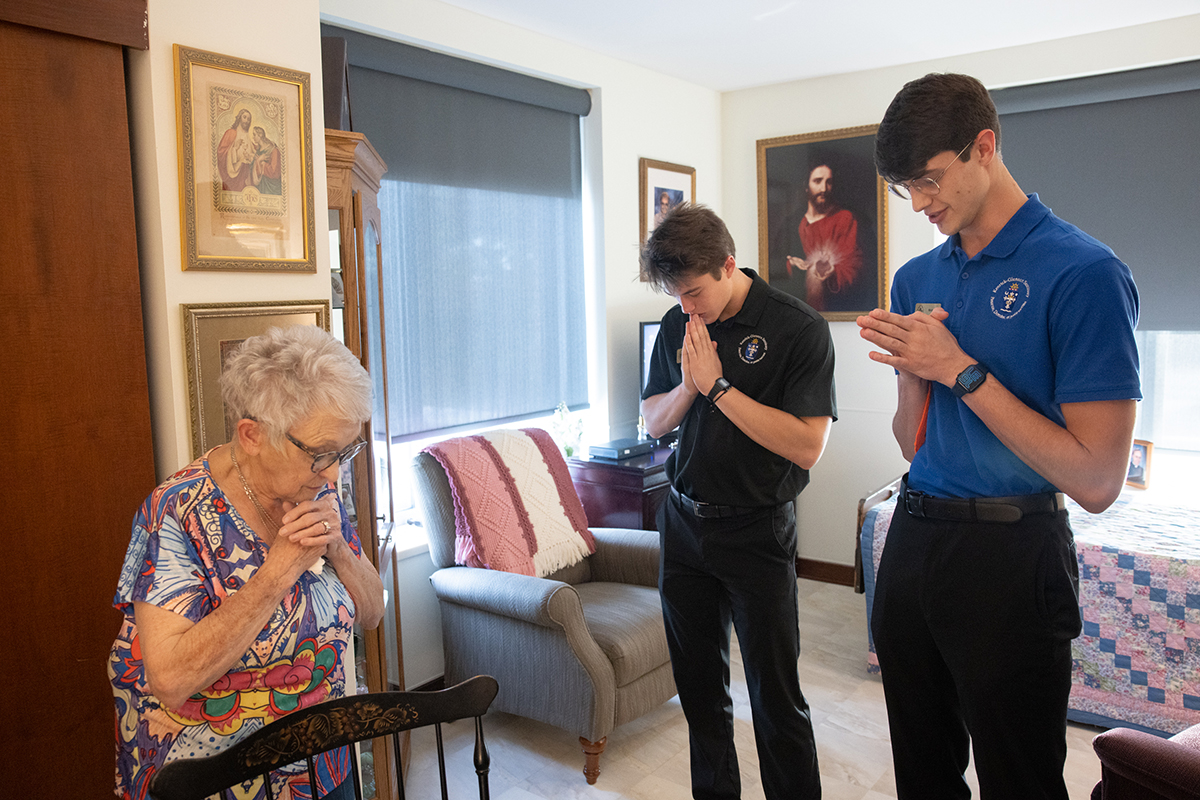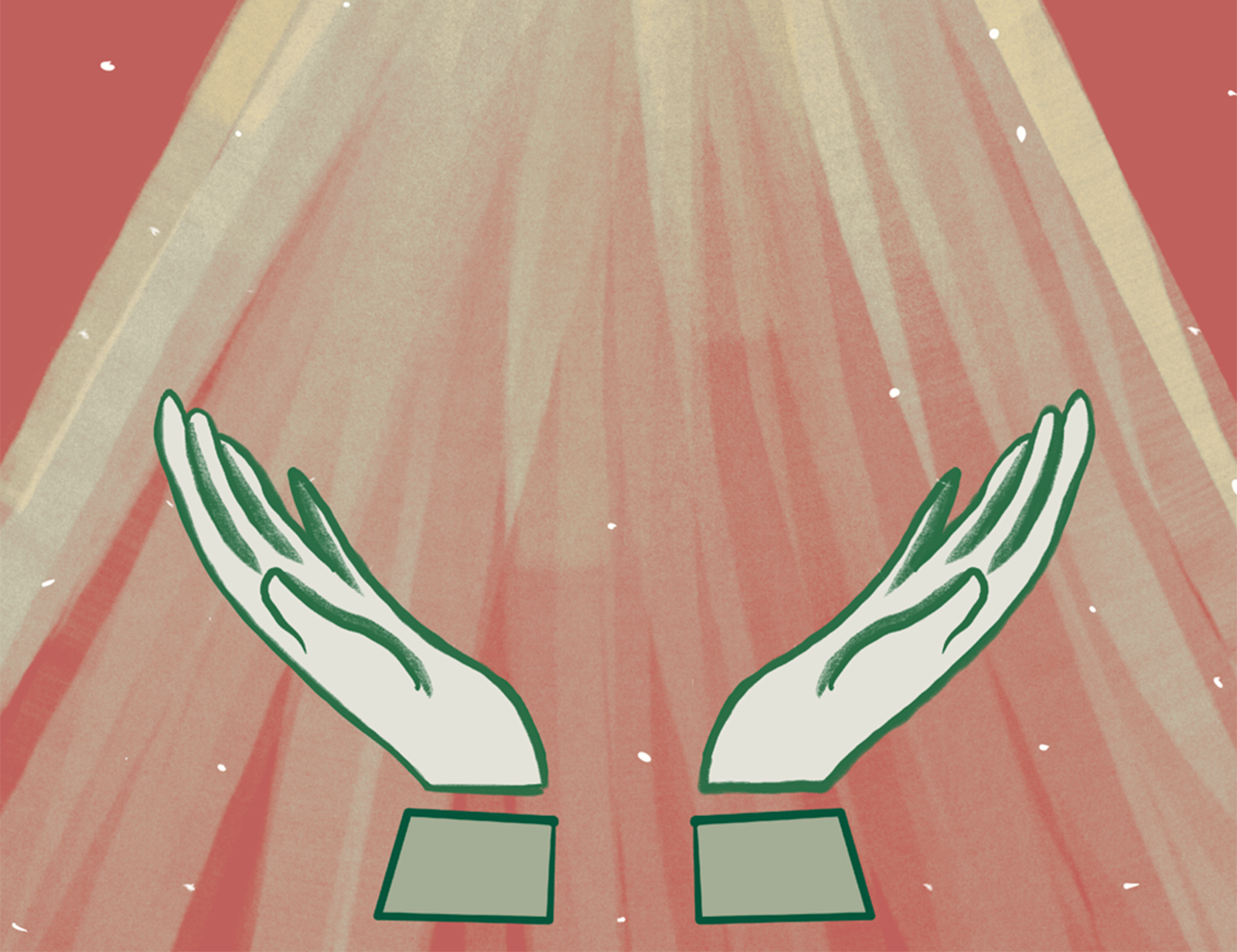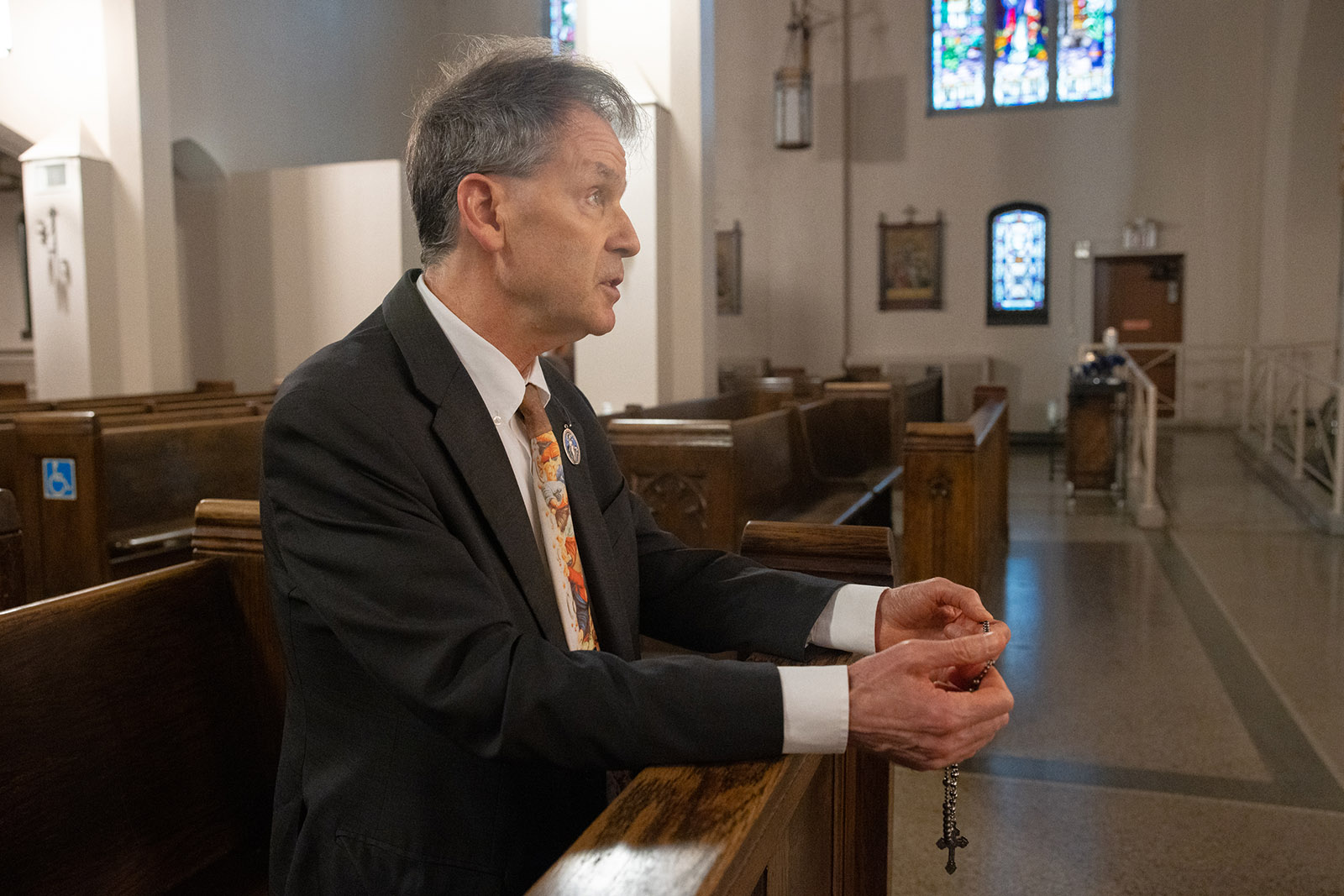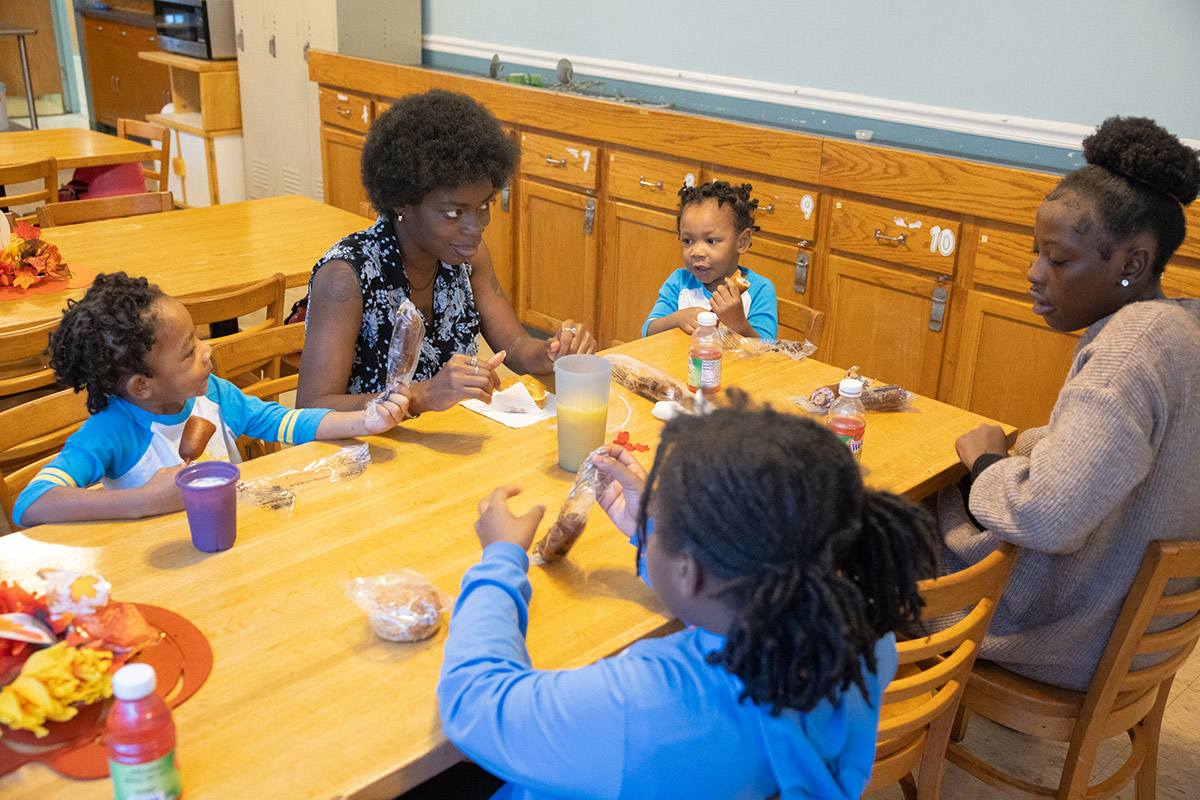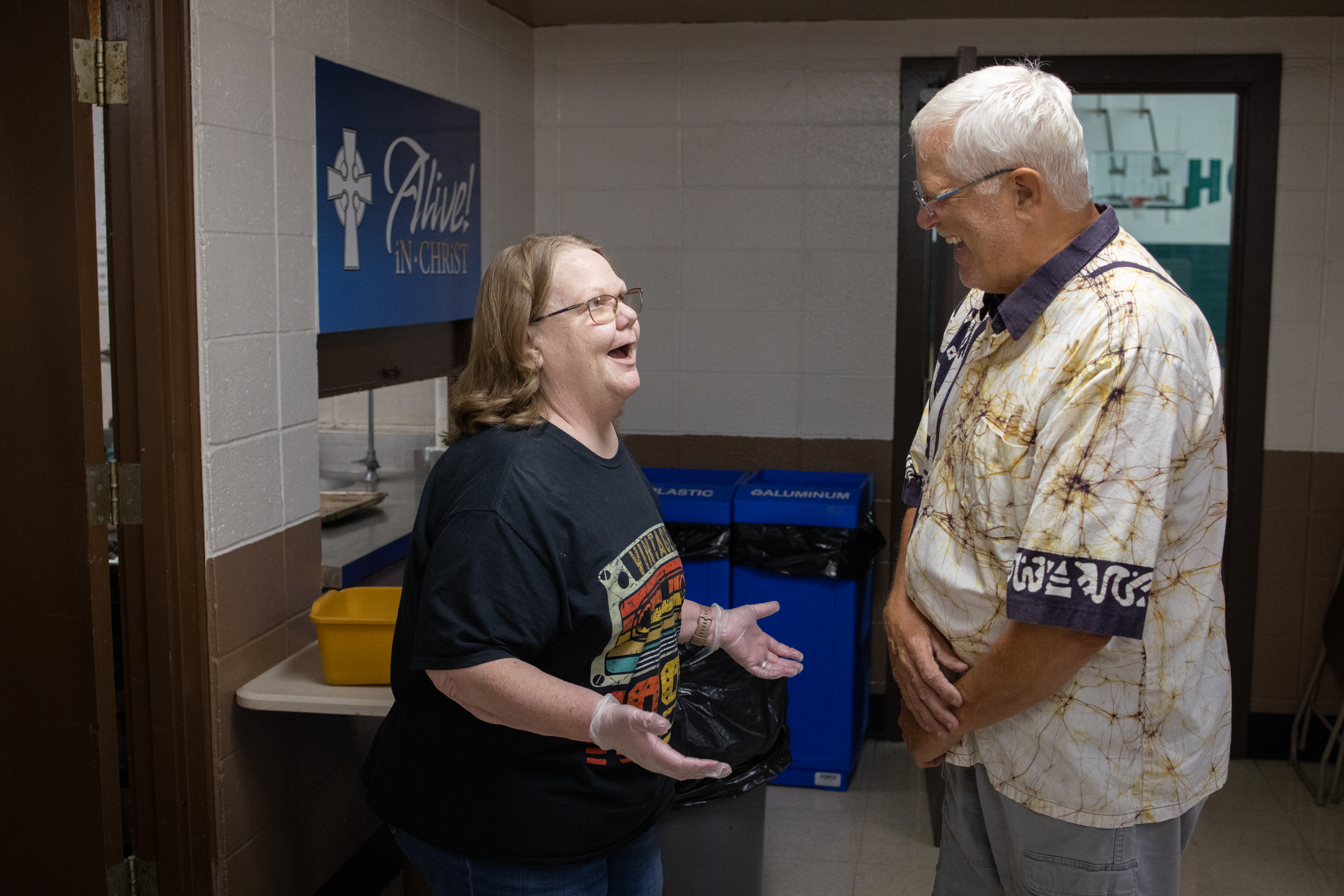Vianney steps up eucharistic reverence, devotion with small acts performed with great love

Taking a cue from the national Eucharistic Revival, students at Vianney High School have increased their devotion and reverence for the Eucharist
The parking lot at St. John Vianney High School was packed on a recent weeknight. Along with the baseball, volleyball and lacrosse games
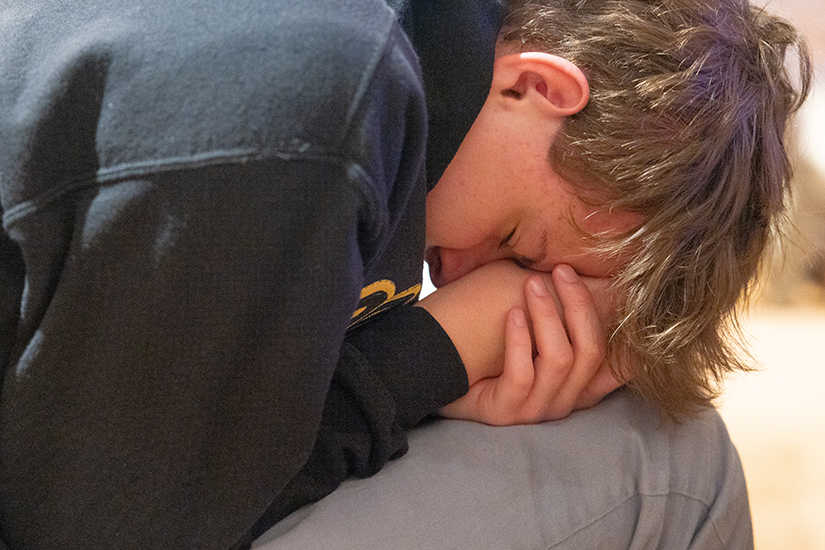
on the schedule that evening, about two dozen students had gathered in the chapel on campus to adore the eucharistic Lord at a praise and worship night.
Teens quietly greeted one another as they filed into the Curé of Ars Chapel, an intimate setting for an evening that included a short talk, followed by adoration. Students helped lead the music on piano and guitar, which set the mood for
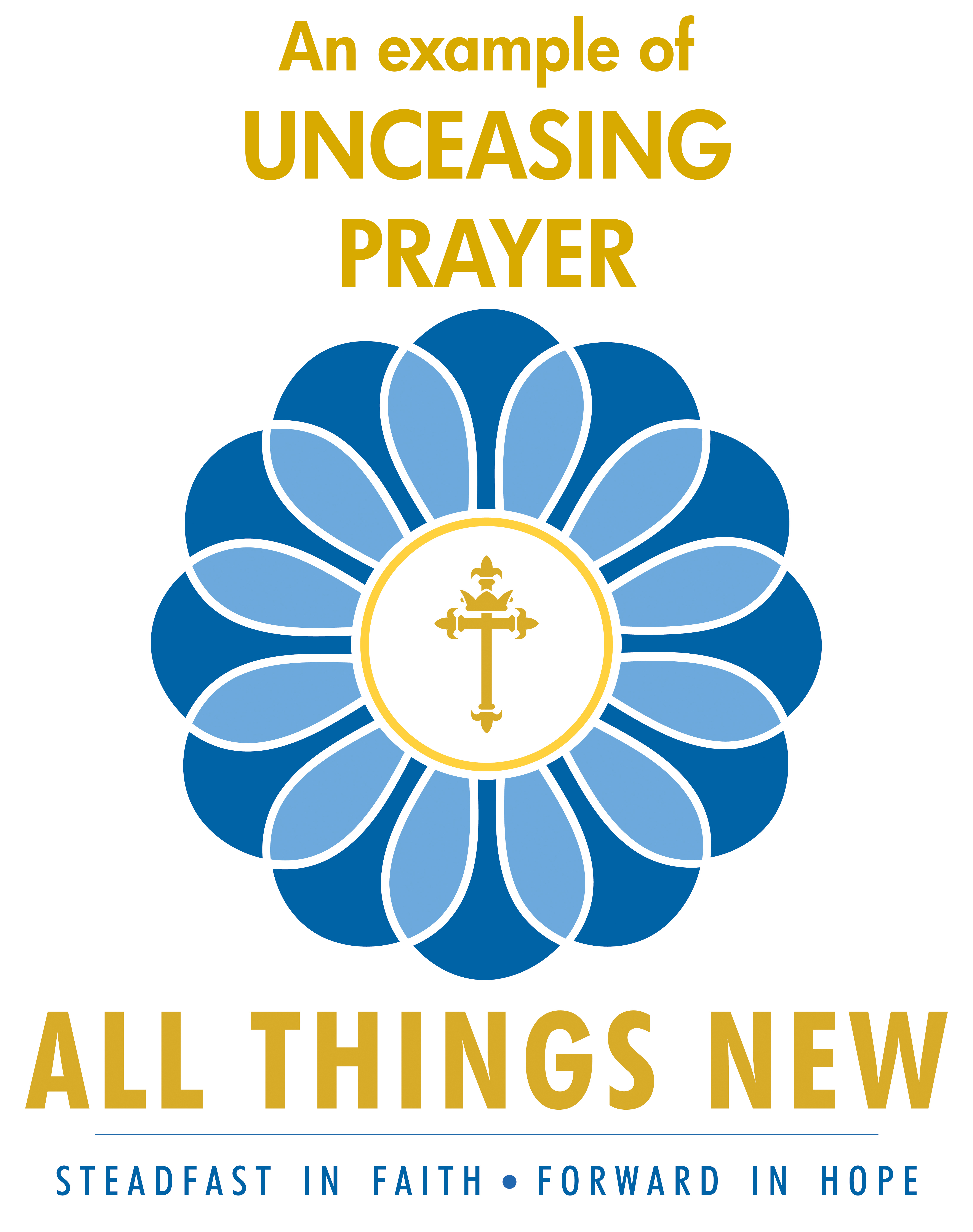
participants to sing and pray.
Vianney senior Jack Bilka has noticed the impact that the praise and worship gatherings have had on the school community as a whole, as well as how they’ve impacted him personally. Jack became involved through Griffin LIFE (Living In Faith Experience), a student club that builds Christian community through faith and fellowship.
“It’s special that everyone wants to be here,” he said. “As a senior thinking about college and finals and trying to figure out future plans, it’s taking time to take a breath and step away, even if it’s just for an hour to thank God and be present in my relationship with Him.”
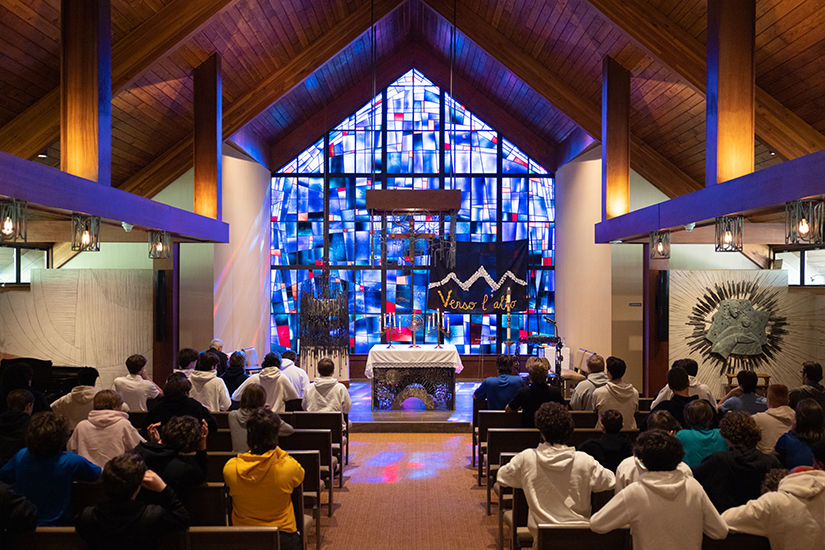
Students at the all-boys Marianist high school initiated the monthly gathering last school year, and this year opened it up to other high schools. It’s one example of how Vianney has integrated eucharistic education and increased reverence on campus.
School leaders took note of the national Eucharistic Revival, which U.S. bishops launched last summer to nurture the belief and devotion to the Real Presence of Jesus Christ in the Eucharist. They asked: What would that look like in a high school with the involvement of
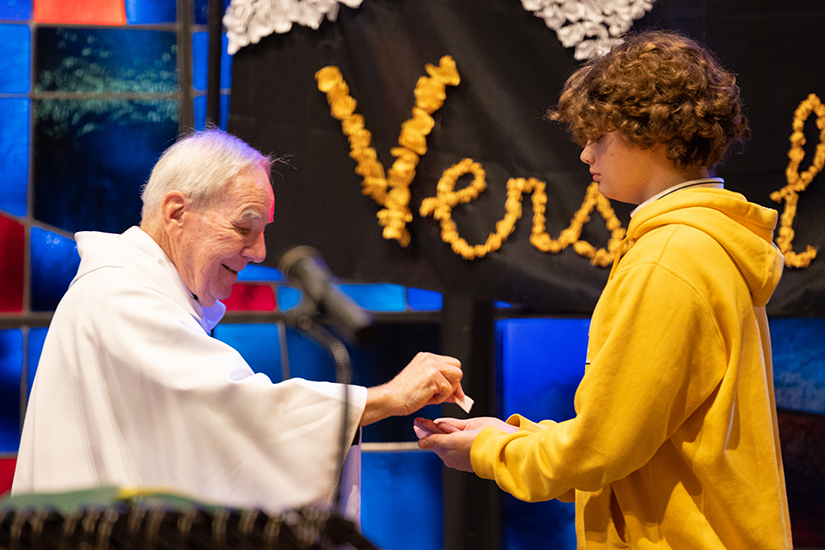
students?
Vianney planned its theme for the 2022-23 school year — “Verso L’Alto,” a term coined by Blessed Pier Giorgio Frassati — to challenge students to work “for that which is higher, to set off beyond ourselves, towards the highest of what it means to be man,” to quote Blessed Frassati.
“He talks about the higher you are, the more you’ll hear the voice of God,” said Grace Burnworth, Vianney’s director of campus ministry and theology teacher. “How do we bring our students to that? Just observing these students, it’s obvious that being in the presence of the Eucharist gives them the opportunity to fall in love with Christ. It’s like, if we get out of the way, Jesus will be attractive to them.”
In addition to the monthly praise and worship evening — which is a totally optional event for students and their friends — the school has ramped up its eucharistic presence on campus. Each Friday, exposition of the Blessed Sacrament is offered all day in the chapel. Teachers are encouraged to bring their classes to adoration for the last half hour of classes on Fridays, with programming provided by the campus ministry team. In March, the school held
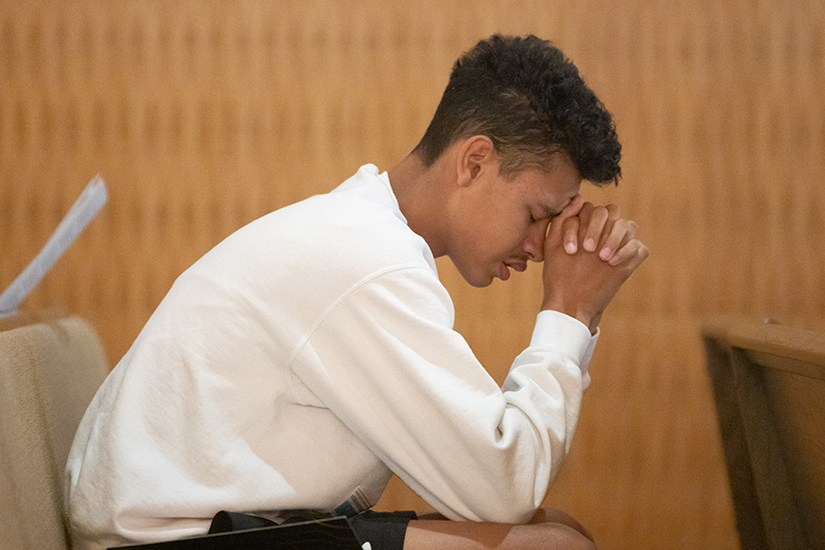
a eucharistic procession on campus.
There also have been small yet noticeable changes to Masses at Vianney. Students have a role in planning them, and they sing in the choir, play music and distribute the Eucharist. At all-school Masses celebrated in the activity center, students lead the servers with a red sanctuary lamp as they process the Eucharist back to the tabernacle in the chapel, while the rest of the students remain standing. Student leaders also assist other students in explaining the process of purifying sacred vessels after Mass. Other small changes include using incense at adoration and bells for the consecration at Mass.
Earlier in the school year, the campus ministry team visited freshman and sophomore classes for a lesson on the Real Presence in the Eucharist and concluded with a visit to the chapel for adoration.
Freshman Luke Schmidt said all of the things he’s noticed in his first year at Vianney have reinforced his understanding of the Real Presence. “It’s very real in a sense of the Eucharist being present in the monstrance,” he said. “Some people think Jesus isn’t there, but He’s there, and that fills you with a sense of joy that He’s around you.”
The school’s eucharistic procession, said freshman Will Corbett, helped draw him closer to God. “That was very powerful, really cool to see everyone lined up in the hallways,” he said. “There’s a sense of brotherhood in it, and we were all kind of together.”
Small things with great love
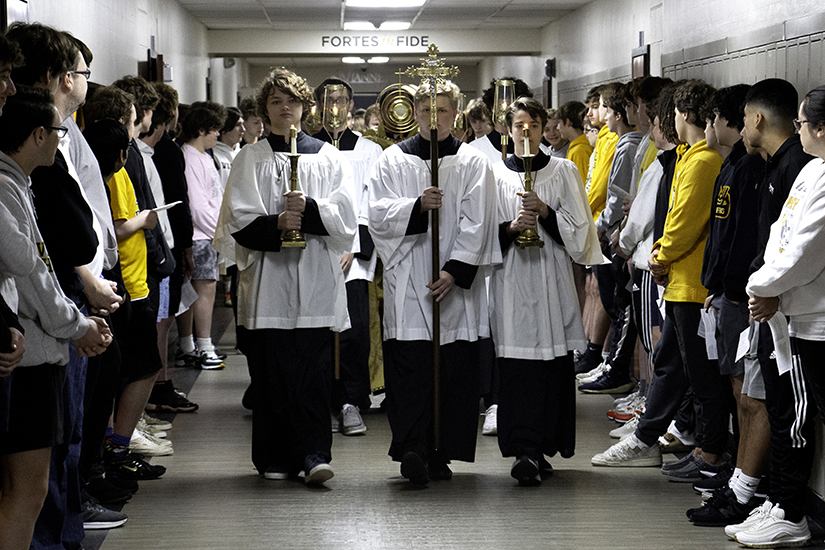
On a Friday morning at the beginning of the school day, Vianney students filled the Cure of Ars Chapel for Mass. These Friday Masses are an optional activity, yet the space was nearly standing room only.
Father Carl Scherrer, a retired priest visiting from the Diocese of Belleville, Illinois, recalled in his homily the Gospel story in which Jesus fed 5,000 people with just a few loaves of bread and a few fish.
“It reminds us that the supernatural builds upon the natural,” he said. “Jesus didn’t make bread come down from heaven, but He took what was there and multiplied it. Jesus could do a lot with just a little bit.”
Father Scherrer encouraged students to put themselves in the shoes of the boy who gave his bread and fish to Jesus. “Would you let go of what you had at the request of Jesus?” he asked. “A little bit goes a long way when we hand it over to Jesus.”
St. Teresa of Calcutta frequently encouraged people to do small things with great love. Grace Burnworth, the campus minister, said seeing students grow in their relationship with Jesus has opened her eyes to the little ways in which the school is reinforcing the importance of the Eucharist.
“All of our actions communicate something,” she said. “Are we teaching them something in how we are cleaning the vessels? Or how are we carrying the vessels? Are we teaching our students why we are doing that? Why are we standing when the King of Kings exits the gym at an all-school Mass? Because He deserves it. He doesn’t require it — but He deserves it.”
Real Presence
The term transubstantiation is used when bread and wine become the Body and Blood of Jesus. They do not become symbols of the Body and Blood; they become the actual Body and Blood of Jesus.
Different types of changes occur, even though our senses have not seen any change. For example, if a piece of paper is torn, it has changed. It’s still paper, but the appearance has changed. Some changes occur that can’t be seen. For example, when you learn something new, a change has occurred inside you, but it can’t be seen on the outside. You remain the same person as before.
When bread and wine are changed into the Body and Blood of Christ, they change completely; their substance change and they become Jesus, truly present. However, the appearances do not change; they still appear as bread and wine.
God has given us eucharistic miracles as examples of teaching us about the Real Presence of Jesus in the Eucharist.
The parking lot at St. John Vianney High School was packed on a recent weeknight. Along with the baseball, volleyball and lacrosse games Jack Johnson, a freshman at St. John … Vianney steps up eucharistic reverence, devotion with small acts performed with great love
Subscribe to Read All St. Louis Review Stories
All readers receive 5 stories to read free per month. After that, readers will need to be logged in.
If you are currently receive the St. Louis Review at your home or office, please send your name and address (and subscriber id if you know it) to subscriptions@stlouisreview.com to get your login information.
If you are not currently a subscriber to the St. Louis Review, please contact subscriptions@stlouisreview.com for information on how to subscribe.

